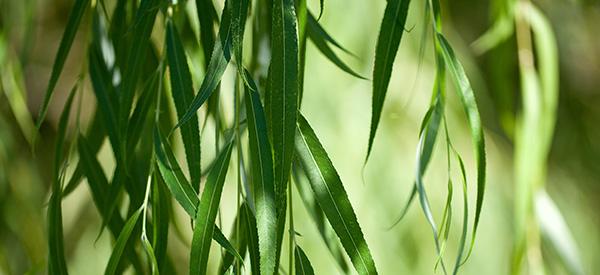
Willow
Willow (Salix), also known as osiers, is a large genus of plants that holds about 400 species of deciduous trees and shrubs. The name Salix may have early Celtic origins meaning “near water”. This notoriously thirsty genus of plants boasts not only giant trees that are 90 feet tall and wide but also low-growing dwarf alpine species of heights that reach only 2 ½ inches and every size of tree and shrub in between.
Most interestingly, willow bark contains a miraculous combination of salicin, polyphenols, and flavonoids. Because of this, willow bark has been used as a pain reliever for over 3500 years. In studying and isolating salicin from willow bark, scientists created synthesized analgesic compounds known as salicylic acid, the main ingredient in aspirin.
Luckily, it appears all species of willow contain pain-relieving compounds including salicin. The White Willow is often exulted as the willow species most noted for the presence of salicin in its bark, as is Purple Osier Willow. As these are both native to Europe where early salicin extraction was practiced, this makes sense. In fact, many peoples indigenous to North America used willow bark in pain-relieving medicines for time immemorial.
Extremely useful, the long flexible branches of many willow species are used in weaving and basketry. Amazing for plant breeders, willows also contain a plant hormone known as indole butyric acid which stimulates root growth. Willow branches can be crushed and soaked overnight in clean water to make ‘willow water’. This ‘willow water’ is a homemade rooting hormone helpful in successful plant propagation.
How to Identify Willow
- Shape: Deciduous trees and shrubs.
- Leaves: Willow leaves are often elongated and narrow with serrated edges. The leaves of some species are round or oval.
- Flower: Most willow species produce catkins in early spring, usually before the leaves emerge.
- Stem: Willow branches are often colorful, fast-growing, and flexible.
Related: Plant Identification Guide – 400 Wild Plants That You Can Forage For (Video)
How to Grow Willows
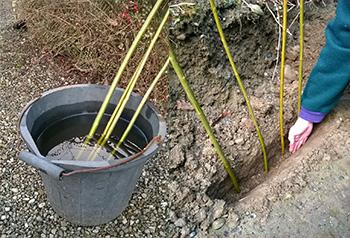 Willows prefer deep, moist, rich soils that are well-draining. Most willows prefer full sun. They are very fast-growing plants with strong root systems which provide excellent erosion control. In the landscape, it is sensible to avoid growing willows near houses, foundations, septic fields, water, and sewer lines as the aggressive, water-seeking roots can cause unwanted damage.
Willows prefer deep, moist, rich soils that are well-draining. Most willows prefer full sun. They are very fast-growing plants with strong root systems which provide excellent erosion control. In the landscape, it is sensible to avoid growing willows near houses, foundations, septic fields, water, and sewer lines as the aggressive, water-seeking roots can cause unwanted damage.
One of the easiest woody plants to propagate, willows contain their rooting hormone. Plants can be started by taking cuttings of live willow branches and pushing them into moist soil. Keep them well watered and new shoots and roots will emerge in a few weeks.
As mentioned, willows are great for erosion control, and they make fast-growing hedges, naturalized areas, and are useful in creating living fences.
Related: 10 Plants That You Should Never Plant Together (Video)
How to Harvest Willow Bark
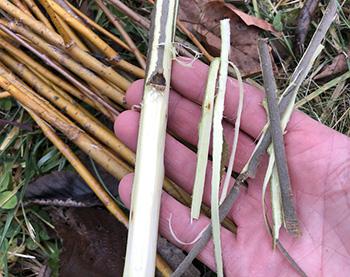 The best time to harvest willow bark is in the spring or the fall. Find 1- to 2-year-old willow branches that are less than ½ an inch in diameter. Using shears, pruners, or scissors, trim several feet of branches to harvest the bark from. There is no need to harvest willow bark from mature tree trunks. Not only can this scar the tree, but this bark is also often very hard and thick with deep fissures. The bark from mature tree trunks is thought to be of little medicinal value anyway.
The best time to harvest willow bark is in the spring or the fall. Find 1- to 2-year-old willow branches that are less than ½ an inch in diameter. Using shears, pruners, or scissors, trim several feet of branches to harvest the bark from. There is no need to harvest willow bark from mature tree trunks. Not only can this scar the tree, but this bark is also often very hard and thick with deep fissures. The bark from mature tree trunks is thought to be of little medicinal value anyway.
The most inner layer of bark is known as the cambium layer. The cambium layer of young branches is considered the best place to obtain the medicinal compounds found in willows.
Using a sharp tool, knife, or vegetable peeler, scrape or peel the outer layers of bark off the small branches. This bark can be used immediately or stored for later use.
Related: American Beech Nuts – A Staple At The Grocery Store 100 Years Ago (Video)
What Willow Is Good For And The Natural Remedies Made From It
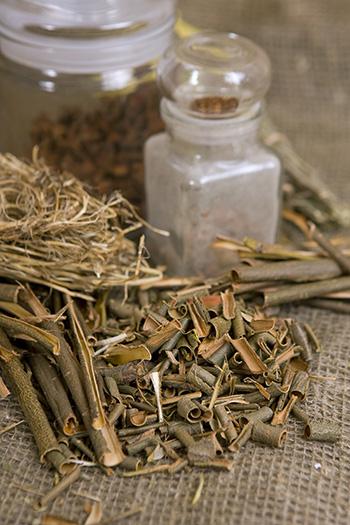 Willow bark’s main use is for pain relief. People make tea from the bark for its anti-inflammatory and painkilling action. Some people prefer to chew on unprocessed willow bark to naturally extract the salicin and other pain-relieving plant particles to help aid fever, headaches, and arthritis pain. Interestingly, many health food stores and drugstores carry willow bark in powdered or encapsulated form. Similarly, willow bark extracts, liquids, and tinctures are available as a substitute for aspirin.
Willow bark’s main use is for pain relief. People make tea from the bark for its anti-inflammatory and painkilling action. Some people prefer to chew on unprocessed willow bark to naturally extract the salicin and other pain-relieving plant particles to help aid fever, headaches, and arthritis pain. Interestingly, many health food stores and drugstores carry willow bark in powdered or encapsulated form. Similarly, willow bark extracts, liquids, and tinctures are available as a substitute for aspirin.
Willow bark may have an extraordinary benefit for topical use as a gentle skin cleanser, moisturizer, and acne prevention. There is a long list of high-end and natural skincare products available that list willow bark and its extracts as ingredients.
What Parts of Willows Are Used In Remedies?
Willow bark’s active ingredient is salicin. This is complemented by willow bark’s accompanying flavonoids and polyphenols which may be responsible for making willow bark exceptionally effective.
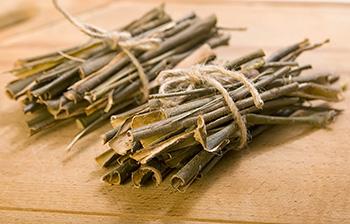 From as far back as the earliest human civilizations 5500 years ago, the leaves and bark of willows have been used to treat aches and fever. Over the last couple of centuries, the salicin of willows has been isolated and studied. This has brought about the production of fever-reducing and pain-relieving medicines. Notably aspirin and other non-steroidal anti-inflammatory drugs (NSAIDS).
From as far back as the earliest human civilizations 5500 years ago, the leaves and bark of willows have been used to treat aches and fever. Over the last couple of centuries, the salicin of willows has been isolated and studied. This has brought about the production of fever-reducing and pain-relieving medicines. Notably aspirin and other non-steroidal anti-inflammatory drugs (NSAIDS).
Willow Recipe – Dried Willow Bark Ready for Tea, Tincture, Infusion, Salve
This recipe has been a journey following the path of identifying the many species of willow growing wild along a nearby river, obtaining the branches, processing the bark, and preserving it for future use.
In the recipe below, I used a natural hybrid of Salix lutea, yellow willow. I have made pain-relieving topical oils and salves with this willow plant in the past with effective relief from painful muscles and joints.
STEP 1: Identify willow plants growing in your area. Carefully select from an abundant place as to not take important habitat or food from wildlife.
STEP 2: In fall or spring before leaves emerge, trim young branches.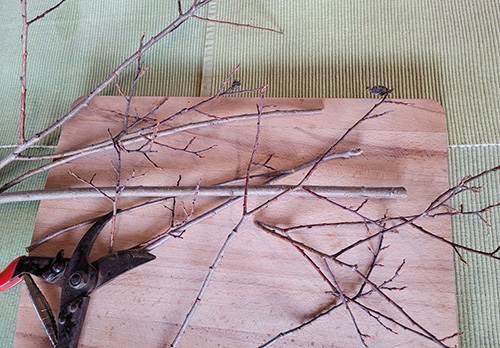
STEP 3: Cut the branches into manageable sizes and begin removing the bark with a sharp knife or vegetable peeler.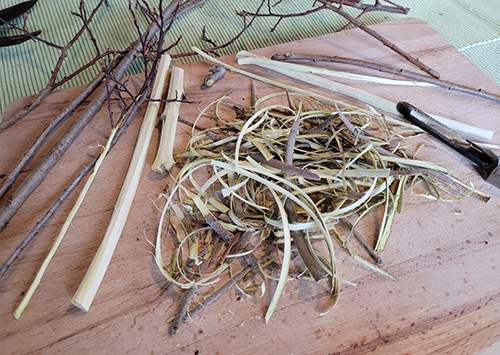
STEP 4: For drying bark, I believe a slow, natural process is best. I use these perforated sheets reclaimed from some old shelving. The bark is spread out to dry. The perforated sheet is placed between two pieces of cardboard and protected from light and heat during the drying process. Place the sheets holding the willow bark in a well-ventilated, dark area for 3 to 6 weeks to fully dry.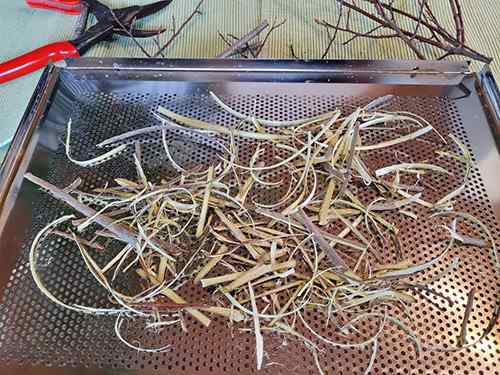
STEP 5: Once the willow bark is completely dried, it is more brittle and harder.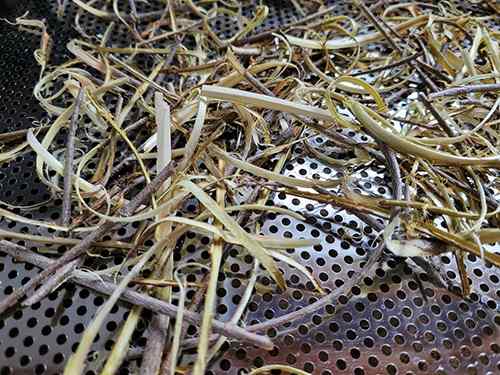
STEP 6: Surprisingly durable, plan to spend some time chopping up the bark pieces. This is less messy when the bark is dry, but the bark is firmer, so it requires some extra muscle power. It could be chopped before the drying stage, but the sap would get on the tools rather than in the potential willow bark products.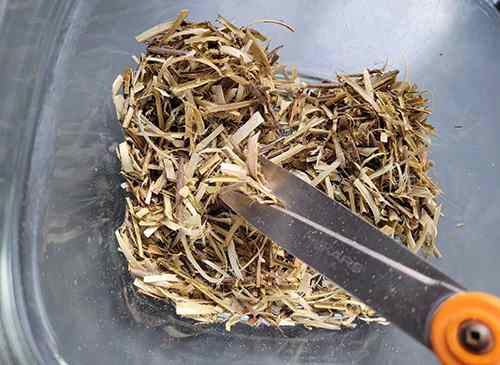
STEP 7: Once the willow bark is chopped to your preferred size, place it in an airtight container such as a glass canning jar. I keep mine in a cupboard at room temperature where it will last up to 18 months.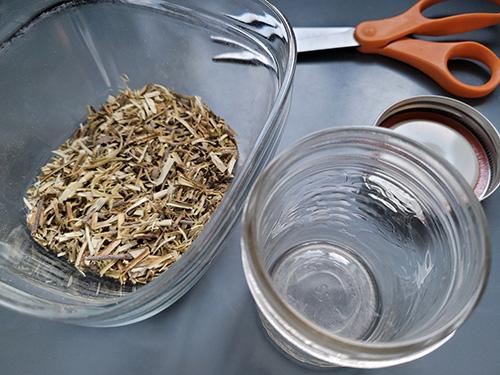
Related: Add This Plant to Your Coffee to Reduce Pain and Inflammation (Learn More)
Potential Uses
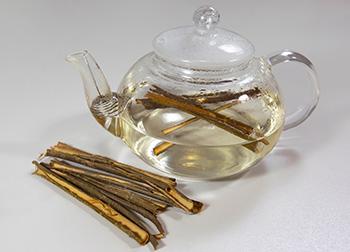 Tea: This dried willow bark is ready to make a hot cup of pain-relieving tea. Use 1 teaspoon bark to 1 cup of boiled water. Steep for 10 minutes and strain. Take up to 3 times daily.
Tea: This dried willow bark is ready to make a hot cup of pain-relieving tea. Use 1 teaspoon bark to 1 cup of boiled water. Steep for 10 minutes and strain. Take up to 3 times daily.
Tincture: For an alcohol-based tincture, soak dried willow bark in your tincture alcohol of choice for up to 6 months
Oil Infusion and Salve: Make an oil infusion for topical use to soothe aching muscles, sore joints, and arthritis pain. Put 1 tablespoon of dried willow bark in 2 ounces of carrier oil. Allow infusing for 2 to 4 months, stirring or shaking on a regular, near-daily basis. Strain out the plant material and use it to massage affected areas. This willow bark-infused oil is also ready to melt with a thickening agent such as beeswax to make a soothing salve.
Dosage
From Healthline, the recommended dose for taking willow bark products for pain is 240 mg a day in powdered, encapsulated form. For taking liquid or tincture drops, the amount of 2 mL in liquid form is recommended for pain relief. In the case of tea or using the unprocessed bark, it is difficult to determine the amount of salicin available or absorbed.
How To Preserve Willow Bark
Collected willow branches can be kept in a cool dry place until ready for use. Alternatively, the bark can be peeled off the stems and dried for future use. Fresh or dried bark can be made into an extract or tea. Dried bark can be powdered and put into capsules. The bark can also be preserved by making a tincture or an oil infusion.
Common Varieties of Willows
Below are 5 common willow varieties that host beneficial compounds. Luckily, it appears all species of willow contain pain-relieving compounds including salicin. The White Willow is often exulted as the willow species responsible for the presence of salicin in its bark, as is Purple Osier Willow. As these are both native to Europe where early salicin extraction was practiced, this makes sense. Many peoples indigenous to North America have used many willow species as pain-relieving medicines.
Importantly, keeping track of willow species in this large and diverse genus is complicated. This is because the species readily hybridize with each other, and each species grows with vast variability.

| Salix Species | Salix alba, White Willow | Salix lutea, Yellow Willow | Salix scouleriana, Scouler Willow | Salix purpurea, Purple Osier Willow | Salix exigua, Narrowleaf Willow |
| Size | 50 to 100 feet | 20+ feet | 20 to 50 Feet | 8 to 15 feet | 6 to 15 feet |
| Native Area | Western and central Asia | Western and central North America | Western North America, Alaska to Northern US | Western Asia, North Africa, and Europe | All of North America |
| Growing Zone | 4 to 9 | 2 to 9 | 3 to 9 | 4 to 9 | 2 to 9 |
| Sun Exposure | Full sun to part shade | Full sun | Full sun to part shade | Full sun | Full sun to part shade |
Find more about the Willow Trees at Trees.com
Warnings And Cautions
From the United States Pharmacopeia Safety Review of Willow Bark, products containing willow bark should include cautionary labeling which state that it is not for use in children, women who are pregnant or nursing, or by persons with known sensitivity to aspirin.
From their review of adults taking willow bark extracts delivering 120 to 240 mg of salicin daily for 8 weeks, no serious adverse effects were reported. There were a few allergic reactions as well as adverse gastrointestinal effects noted.
Plant is considered safe for topical use. Of course, with any new ingredient do a small skin test by placing a small amount of the oil or resin on the skin and wait 24 hours. Any reaction such as discomfort, itchiness, or hives may be an indication of a sensitivity. It only makes sense to practice some caution with topical use for people who suffer from allergies or sensitivity to products containing salicylic acid.
There may be contraindications with certain medications. Always check with your healthcare provider before starting new herbal remedies.
You may also like:
How To Make Willow Bark Aspirin
10 Medicines That Are Safe to Take After Their Expiration Date (Video)
When Painkillers Won’t be Available, Try This








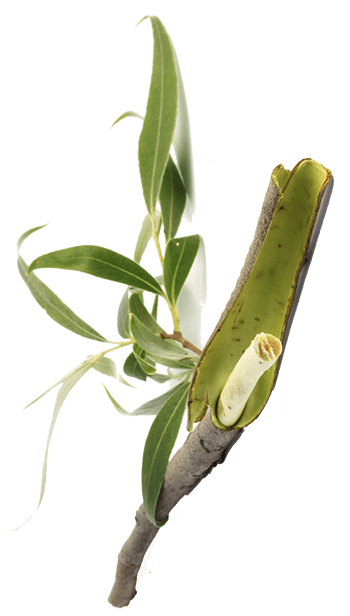

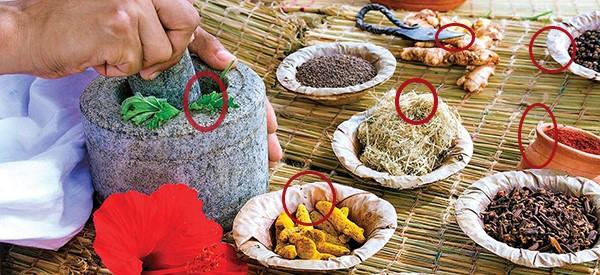
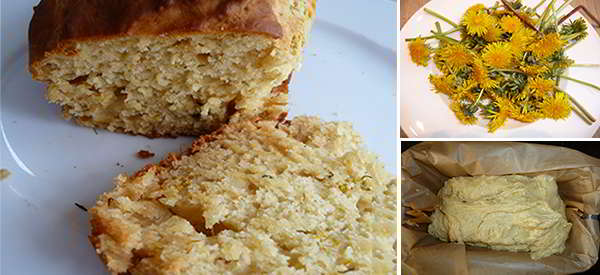
Is the desert willow Chilopsis linearis. part of this family? Thank you!
Hi Rose,
Despite the common name Desert-willow, given because of its willow-like leaves, Chilopsis linearis is actually a member of the bignonia family, Bignoniaceae.
Many blessings and good health!
Amazing what nature can do and its right before our eyes!
Why doesn’t the print or Dowload link work?
I had the same problem. It wouldn’t print either by the ‘print’ or the ‘download’ options. So I just highlighted the area of the article. Then right-clicked on the area and chose ‘print’ from the menu.. Then it printed to my virtual printer which essentially makes it into a PDF. Hope that helps.
It’s not them and theirs, it’s you and yours!
I just was wondering what the ratio of willow bark to alcohol bases tincure?
Hi Teresa,
1:4 ratio (one part herb to four parts alcohol).
Here is the full recipe for the Willow Bark tincture:
https://www.askaprepper.com/how-to-make-a-pain-relieving-willow-bark-tincture/
I hope this helps!
Could you use willow bark supplement to make bath salts?